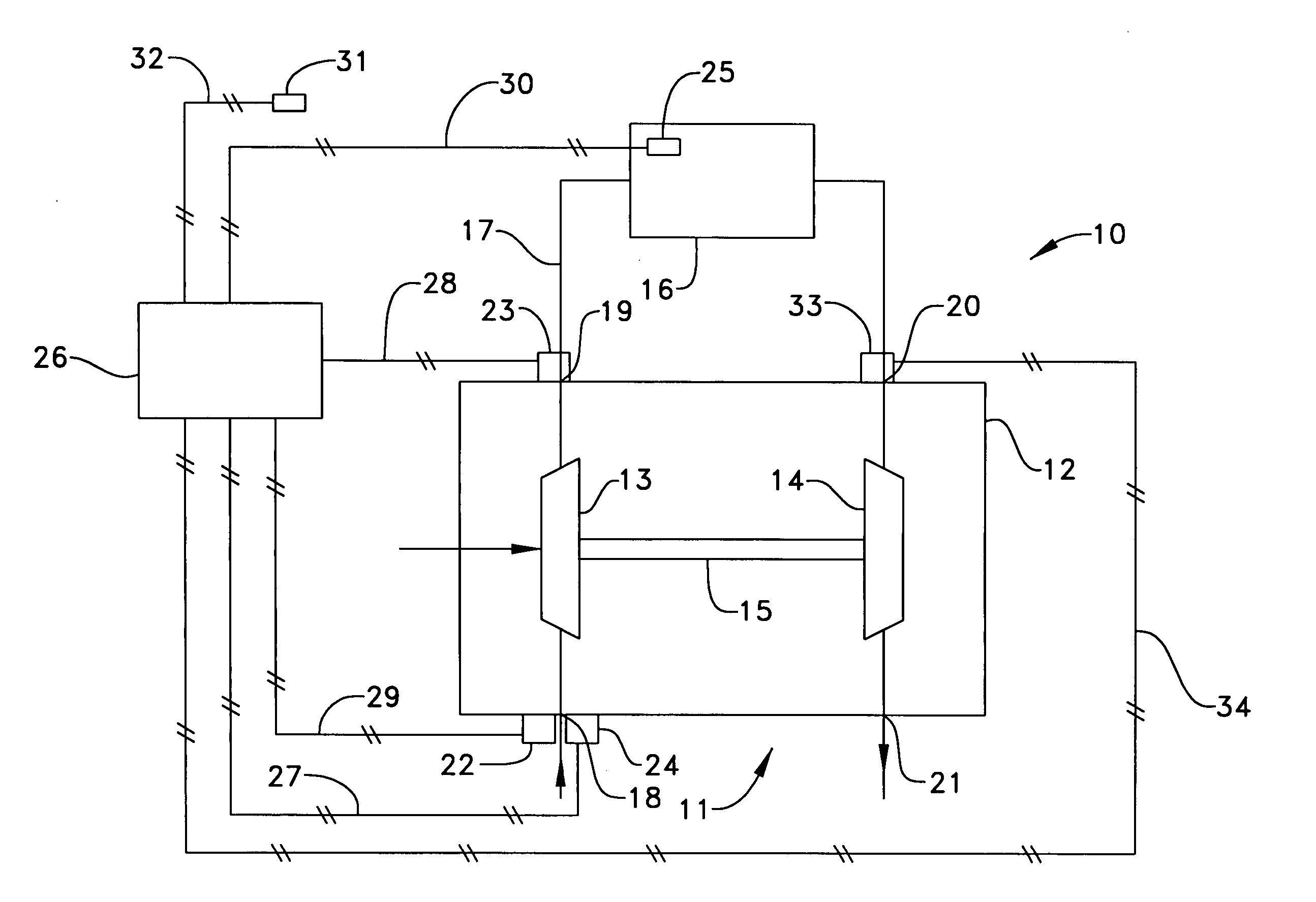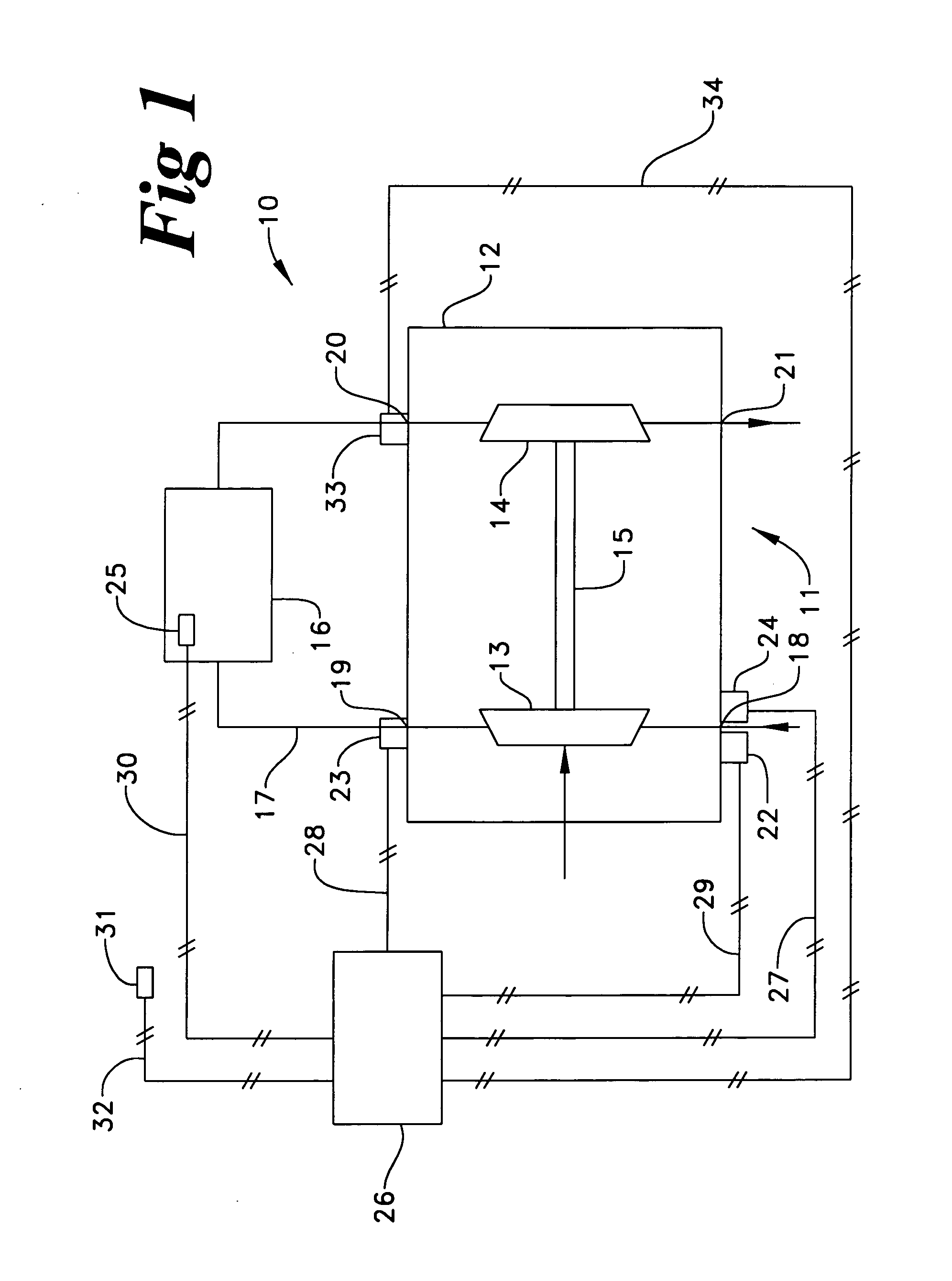Method and system of determining life of turbocharger
a turbocharger and life measurement technology, applied in the field of rotational compressors, can solve the problems of limiting the stress on the turbocharger, and limited life of the turbocharger
- Summary
- Abstract
- Description
- Claims
- Application Information
AI Technical Summary
Benefits of technology
Problems solved by technology
Method used
Image
Examples
Embodiment Construction
[0017] Referring to FIG. 1, there is shown a schematic representation of a turbocharger life determining system, according to the present invention. The turbocharger life determining system 10 includes a turbocharger 11 mounted within a turbocharger housing 12. The turbocharger 11 includes a compressor wheel 13 and a turbine wheel 14 connected by a shaft 15 in a conventional manner. Air is circulated through the turbocharger 11 and an engine 16 via an air line 17. The turbocharger housing 12 defines a compressor inlet 18, a compressor outlet 19, a turbine inlet 20, and a turbine outlet 21. A compressor inlet pressure sensor 22 is illustrated as attached to the housing 12, although the compressor inlet pressure sensor 22 could be positioned at various points within the inlet air line upstream from the compressor inlet 18. Although the compressor outlet pressure sensor 23 is illustrated as attached to the turbocharger housing 12, it should be appreciated that the compressor outlet pre...
PUM
 Login to View More
Login to View More Abstract
Description
Claims
Application Information
 Login to View More
Login to View More - R&D
- Intellectual Property
- Life Sciences
- Materials
- Tech Scout
- Unparalleled Data Quality
- Higher Quality Content
- 60% Fewer Hallucinations
Browse by: Latest US Patents, China's latest patents, Technical Efficacy Thesaurus, Application Domain, Technology Topic, Popular Technical Reports.
© 2025 PatSnap. All rights reserved.Legal|Privacy policy|Modern Slavery Act Transparency Statement|Sitemap|About US| Contact US: help@patsnap.com



